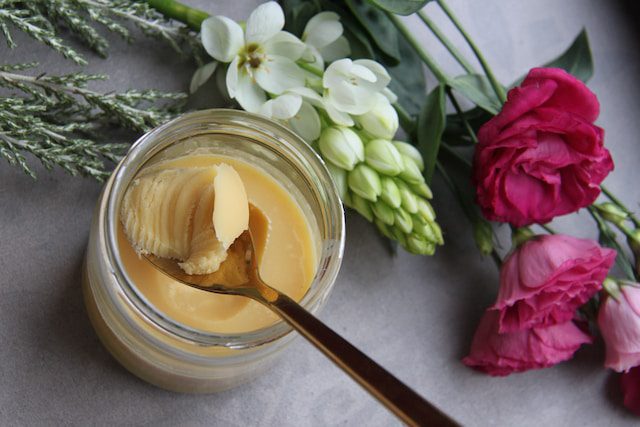
Ghee, often referred to as clarified butter, is a staple in many cuisines around the world, with its origins deeply rooted in South Asia. The term “ghee” is derived from the Sanskrit word “ghṛta,” and its popularity has transcended cultural boundaries, finding its way into kitchens worldwide.
So, what the hell is ghee?
At its core, ghee is a form of clarified butter, but its preparation sets it apart from the common butter found in most households. To make ghee, butter is slowly simmered to separate the milk solids from the liquid fat. The process involves heating the butter until it reaches a point where the water content evaporates, and the milk solids settle to the bottom. What remains is a clear, golden liquid that is rich in flavor and aroma.
One of the primary benefits of ghee is its elevated smoke point, which makes it ideal for high-temperature cooking methods such as frying and sautéing. The removal of milk solids during the clarification process allows ghee to withstand higher temperatures without burning or producing harmful free radicals. This quality makes ghee a versatile cooking fat that adds a distinctive, nutty flavor to dishes.
Nutritional aspects also contribute to the appeal of ghee. While it is a concentrated source of calories and saturated fats, it contains essential fatty acids, fat-soluble vitamins (A, E, and D), and antioxidants. Some proponents of ghee argue that its saturated fats are of a different nature than those found in other cooking oils, potentially offering health benefits when consumed in moderation.
Beyond its culinary uses, ghee holds cultural significance in South Asian traditions. It is often used in religious rituals, ceremonies, and festive occasions. Its association with purity and auspiciousness has made it a symbol of prosperity and well-being in various cultures.
In recent years, ghee has gained popularity in health and wellness circles, thanks to its potential health benefits and versatility. Some people choose ghee as a substitute for butter or other cooking oils, believing it to be a more wholesome option.
Ghee has also found its place in modern culinary trends. Chefs and home cooks alike appreciate its unique flavor profile and the depth it adds to both savory and sweet dishes. From drizzling over popcorn to sautéing vegetables or baking, ghee’s rich taste and high smoke point make it a valuable addition to a wide range of recipes.
In conclusion, ghee is far more than just clarified butter. It is a product of careful preparation, with a history deeply intertwined with cultural practices and traditions. Its versatility in cooking, potential health benefits, and distinctive flavor make it a valuable ingredient in kitchens worldwide. So, the next time you encounter the question, “What the hell is ghee?” you can confidently say that it’s not just clarified butter; it’s a culinary gem with a rich history and a flavorful future.

Share this Story
